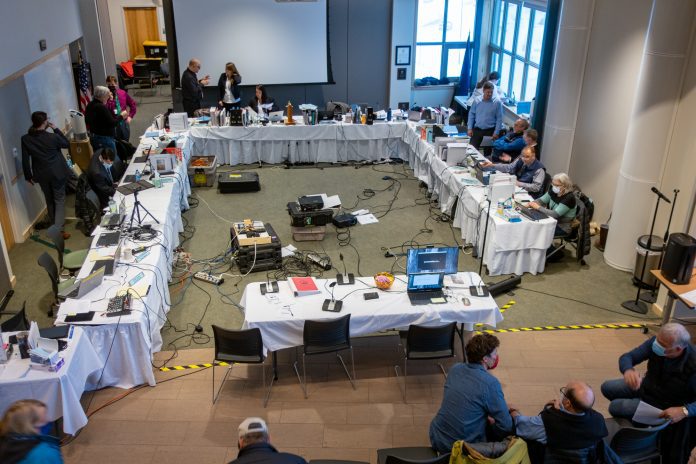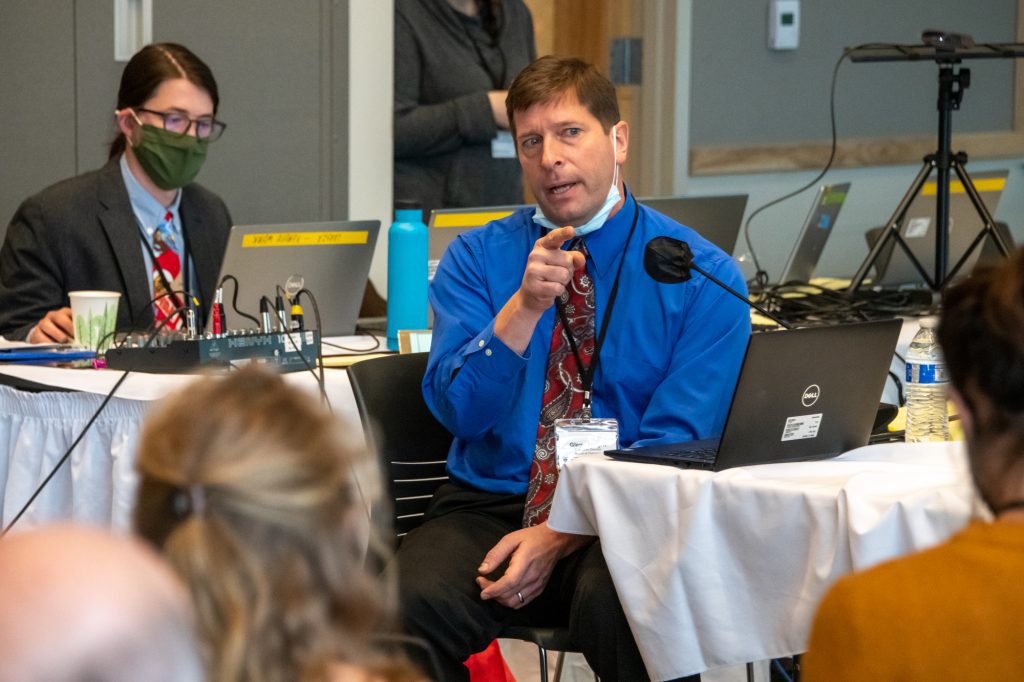
Alaska Board of Fisheries members took on several dozen proposals related to hatchery management, shellfish, drift and setnet fisheries during its Nov. 30-Dec. 6 meeting in Cordova. The board left hatchery issues largely intact, approved a harvest strategy for Prince William Sound Tanner crab and approved use of drift gillnets for certain subsistence salmon harvests.
The board either rejected or took no action on proposals urging a hard cap on straying hatchery fish, proposals which had strong opposition from individual harvesters and fisheries associations, including the Purse Seine Vessel Owners Association, North Pacific Fisheries Association and United Southeast Alaska Gillnetters, United Fishermen of Alaska and many others.
Those proposals urged ramping down production of specific hatcheries by at least 10% to 20% increments each year until straying of hatchery fish into wild fish habitat ceased. In his proposal, which failed 0-6, former board member Virgil Umphenour of Fairbanks had said if the over-production of chum salmon by private not-for-profit hatcheries was not solved that wild salmon stocks bound for Alaska rivers would be subject to unfair competition with hatchery fish.
Tina Fairbanks, executive director of the Kodiak Regional Aquaculture Association, said that the latest campaign against hatcheries began almost four years ago. While a number of hatchery advocates were present at the meeting, opponents were not there and did not submit written or record comment, except for the Fairbanks Advisory Committee and Kenai River Sportfishing Association, who also were in support of reduction of hatchery fish, Fairbanks said.
The board did approve a proposal from the Prince William Sound Setnetters Association to increase the minimum operation distance between set and drift gillnet gear in the Main Bay Subdistrict, allowing for no portion of a draft gillnet to be operated within 30 fathoms of a set gillnet, except in the zone outside of the offshore end of the set gillnet. Setnetters contended this was needed to increase the safety and reduce gear conflict. With recent management changes due to wild stock concerns and the Main Bay Hatchery return shortfalls, the conflict in Main Bay has escalated to a point of pure chaos, they said, especially in the waters inside the terminal harvest area during build up openers.

The board also approved a proposal, with substitute language in place, to allow two Area E purse seine Commercial Fisheries Entry Commission permit holders to concurrently fish from the same vessel, jointly operating up to 250 fathoms of seine gear.
Regarding Prince William Sound Tanner crab, the board passed a harvest strategy put forward by the Alaska Department of Fish and Game and developed with input by industry, noted Jan Rumble, groundfish/shellfish area manager at ADF&G in Homer for Prince William Sound and Cook Inlet.
“This strategy defines commercial harvest levels based on thresholds that need to be met by estimates of mature male abundance from the PWS Tanner crab trawl survey,” Rumble said. “This is an updated strategy with expanded survey areas and new defined districts.”
In addition, the board of fisheries passed an ANS for PWS Subsistence Tanner crab; the department provided the board with information collected from the mandatory subsistence permit that has been in place since 2008.”
None of the five dipnet proposals that called for prohibiting dipnetting from a boat within certain distances of a person dipnetting from shore or a fishwheel passed. Proponents of those measures contended by dipnetting from motorized boats fishermen target stocks with a precision that other fishers lack. All five were voted down 0-6.
The board’s next meeting, on Southeast and Yakutat shellfish and finfish, is set for Jan. 4-15 in Ketchikan





